WHERE DO FISH BITE LURES?
Food for Thought
By Grant ‘Espresso’ Bittle
Fish attack and bite the belly/head area of their prey, baitfish and lures alike, right?
Perhaps one of the most held historical reasons behind the length of assist cords on jigs and various styles of lures is where fish are assumed to attack them. Most information around states the ‘correct’ assist cord set-up is to place the hook in the belly to head area of a jig, where fish strike. Is this actually true, however? Maybe not, and here’s why.
Perhaps better reasoning for determining the most effective assist lengths should now simply be to allow the free-swinging hook to enter the mouth of the fish first as it sucks water in past its gills upon striking prey – little to do with striking at any particular area. For example, slow-pitch jigs, or inchikus or similar, have such erratic motions (evasive in the extreme and designed that way to imitate prey trying to avoid being bitten), that striking at a perceived head or belly area is near impossible. Also, many of these lures simply do not have a distinguishable head or belly area as such. Therefore, most strikes are initially a strike to wound, then eat.
Similarly, the footage I have filmed of snapper striking softbaits and small jigs from just a few metres to 60m-plus down, shows that the attack can come from any and all directions – after all, they live in a 360-degree world, and often strike from the rear/tail end as they follow the lure, contrary to many beliefs.
International Game Fish Association (IGFA) regs restrict the length and size of assists, for several reasons. One aim of this article, in part, is to get us thinking and progressing our fishing approach and not just dogmatically following ‘fishy facts’ that may or may not be true, or once-upon-a-time accurate. Also, times and methods change, and so should their understanding, along with verifiable facts that follow.
Watching snapper on a live camera feed in 60 metres of water eyeing up a softbait with an assist hook is an absolute revelation. Sending a specialised six-propellor underwater drone to the depths is groundbreaking – the only limitation is the pilot’s prowess. Off on its flight down through the consommé-like soup of open water (which immediately changed my understanding of clear blue water, but that’s another story) to observe, with live video feedback onto my phone screen on board (or when on land) what fish were doing, or not doing, to various lures on different days, time of tides and other variations... I was gobsmacked in so many ways, yet other insights were mere confirmation of what we have all experienced over the years.

Small slow-jigging hooks often end up hooking larger fish on the outside of the mouth – evidence of an initial strike to wound, then eat?
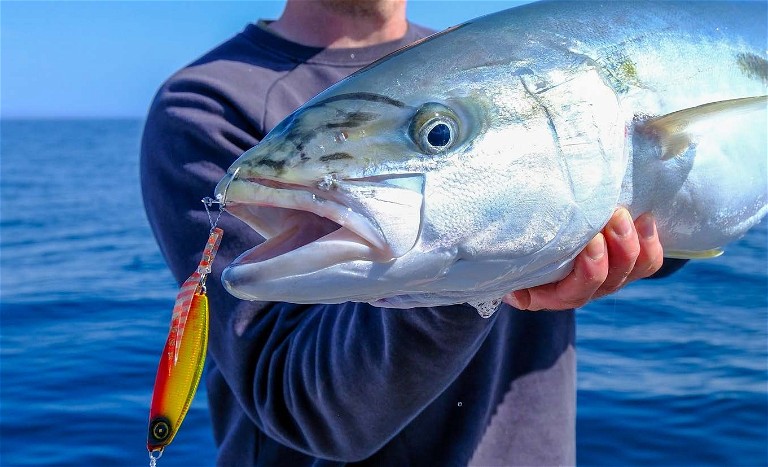
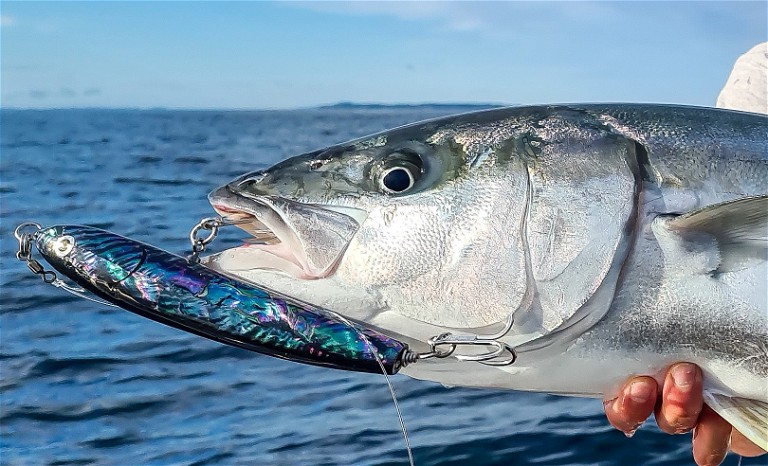
Treble hooks are popular on topwater lures as bites can be explosive and unpredictable!
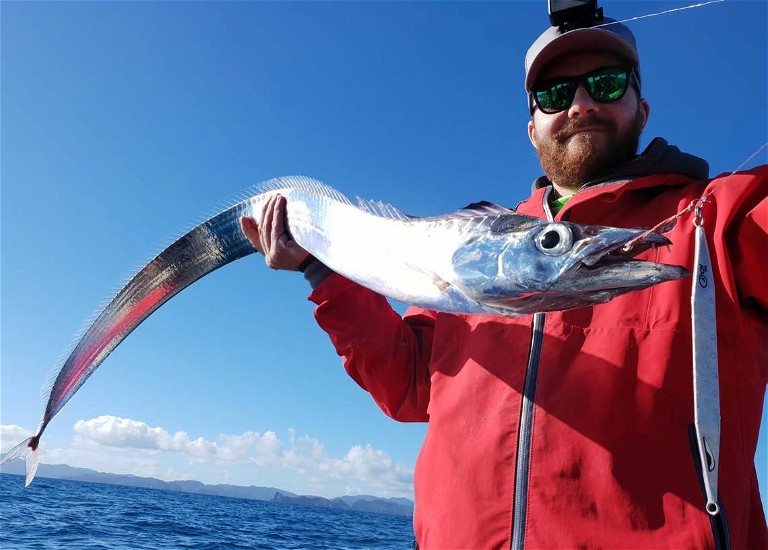
Grant thinks perhaps the most effective assist lengths should simply be those that allow the free-swinging hook to enter the mouth of the fish first as it sucks water in past its gills upon striking prey – little to do with striking at any particular area.
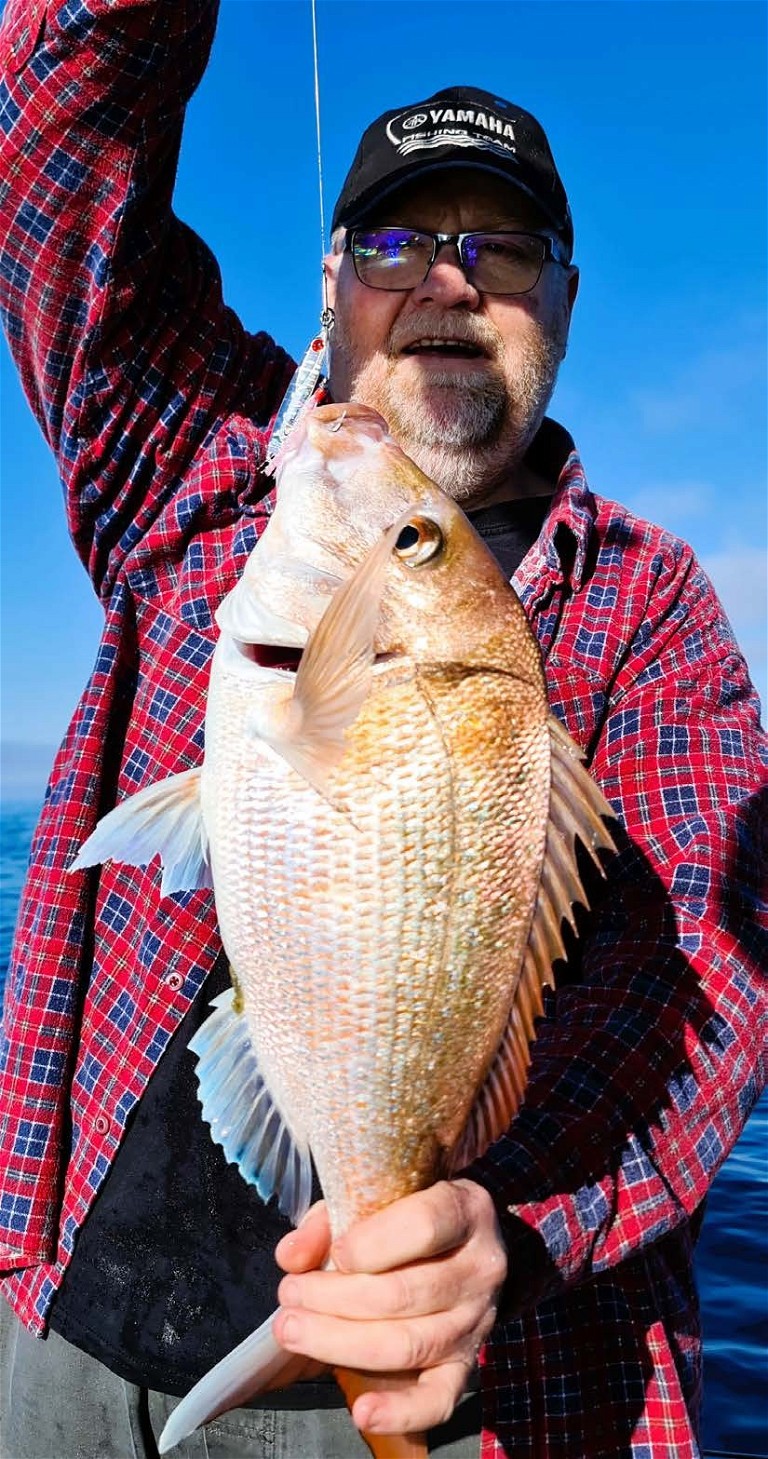
The following is a summary of my key insights:
• Attacks generally stimulate more attacks from other fish.
• Strikes can occur on all parts of lures, including jigheads of softbaits.
• The amount of time fish spend eyeing up a potential prey/lure varies greatly.
• So many more fish can be around than I would have thought – even when my sounder and lack of fish biting screamed, “Move, no fish here!”
• The rather barren open areas of the seafloor require more stealth and crafty rigging.
• Fish notice poor lure presentation fish – lots of ‘yeahnah’ showings.
• Fish can be very smart!
Filming jigs underwater is inherently more difficult than softbaits and some deductions had to be made, but the impression of what the lure looks like – the sum of its parts – is the key contributor to eliciting a strike, or not. Key strike triggers, as suspected, seem to be recognisable things like eyes and shape, with the number one factor being action. In saying that, even with zero action at all, if it resembles food, and if it’s being taken away or looks like it’s trying to get away, it can still attract at least an inquisitive, enquiring strike. The slow retrieve of a big jig, with little action whatsoever, like a straight mechanical jig hanging in the water and slowly rising for instance, can get a hungry or semi-interested snapper to take a hit and try its luck.
“ EVEN WITH ZERO ACTION AT ALL, IF IT RESEMBLES FOOD, AND IF IT’S BEING TAKEN AWAY OR LOOKS LIKE IT’S TRYING TO GET AWAY, IT CAN STILL ATTRACT AT LEAST AN INQUISITIVE, ENQUIRING STRIKE. ”

A softbait deep down the gob of this snapper shows a definite ‘get in my belly’ strike!
Bites range from a definite ‘get in my belly’ type through to a ‘nip it and see’ approach. This is where a few different lures have changed the fishing fortunes of many. The slow jig kabura-style lures, with small, more-or-less hidden hooks dangling below the lure head, most often with a big attractive eyeball, like a squid, calamari or even nautilus, are superb at catching the fish by the lip approach. Often a tentative bite is made when fish are barely interested in feeding or are very wary. The success of this style of lure and slow-wind retrieval technique is renowned, here and worldwide, yet the hooks can be well below most of the lure, around the tail or tentacle (skirt) area.

Simply put, more hooks equal more hookups. However, most fish hooked are wounded, often mortally, as one set in the mouth frequently means one set embeds externally around the head/gill/body area.
An inchiku to a fish is a lot like a white butterfly to us in the garden – if you try catching it in your hand, there will be so many misses, and more often than not a lot of luck involved if you do manage to grab one. With fish in the water without hands, they must suck water in past their gills to help direct the apparent hapless struggling prey into their mouths. So most of the time, while the skirts are the bits that are bitten (the main reason why the hooks are in there), fish are not only keen on the skirts (as they look like a mini-squid) but also the jig itself. The erratic vibrating action gets the fish’s attention – it certainly looks alive and stressed out, it’s probably food, so hit it, hit it anywhere!
OK, so what about the speed merchants – mechanical jigs, the classic jig with hooks set in the belly to head area (where we started this conversation) when we hold them by the leader upright, the way they are retrieved? Firstly, we get hookups on the drop when the hook can be well away from these more uni-directional jigs. Secondly, the mechanical jigging action creates a relatively smooth vertical retrieval, but not just in a straight line with the multitude of angles, shapes and resulting pauses imparting all sorts of darts and shimmies. So even on the retrieve, a speed jig’s assist hook isn’t lying flat alongside the jig, it can and usually is flapping all over the place. Have you tried speed jigging using a rubber band to hold the hook at the side of the jig in its ‘ideal’ strike area? The result is usually many more missed strikes. In fact, the main reason for using the rubber band would be more to benefit us – for storing in jig bags and trying to avoid hooking our own fingers – but remember to take them off.
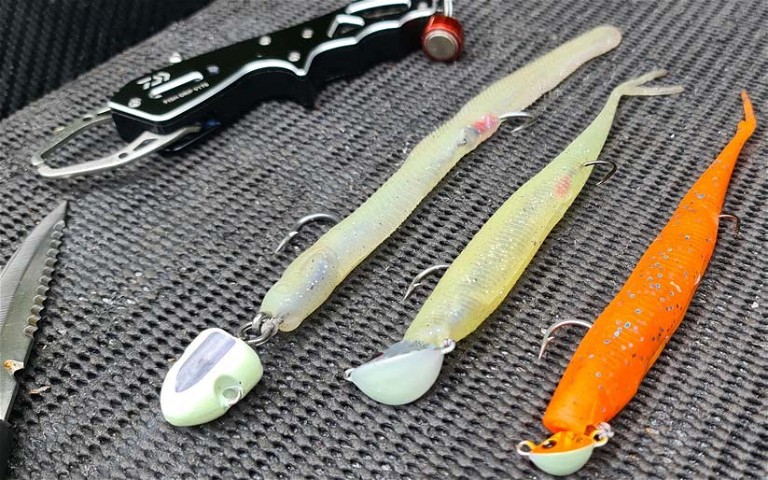
Softbaits double-hooked, like effective strayline rigs, can increase your hook-up rate.

Kaburas catch all manner of species with their small, dangling hooks.

Two sets of hooks are often employed on slow-pitch jigs (one set at each end, with two-four hooks in total) but there are a few things to consider here. Simply put, more hooks equal more hookups, and when you are unconcerned about returning healthy fish, then, yes, you will land more fish this way.
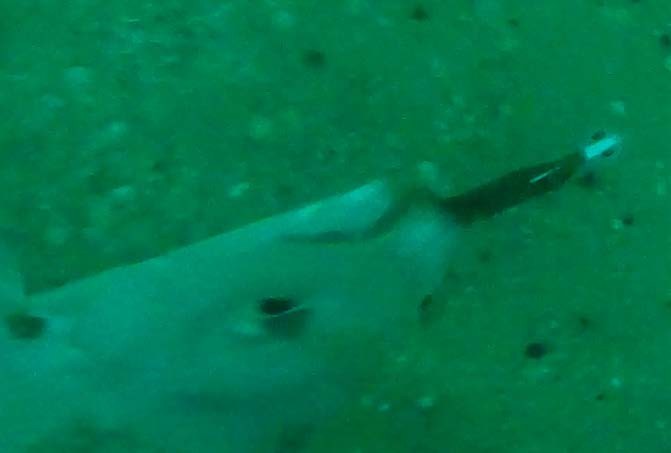

Grant has filmed snapper striking softbaits and small jigs from just a few metres to 60m-plus down, showing that attacks can come from any direction and strikes are often at the rear/tail end as they follow the lure, contrary to many beliefs.
However, most fish hooked are wounded, often mortally, as one set in the mouth frequently means one set embeds externally around the head/gill/ body area. Hooks at both ends can also help the jig fall flat or sideways – which can enhance the desired action and appeal. Also, there are a percentage of fish caught in their mouth but on only the ‘tail end’ of the jig – stupid fish that are biting at the ‘wrong’ end! Or they’re simply biting and couldn’t care less where.
Perhaps setting an assist hook cord length so the hook lies around the mid to upper section of, say, a mechanical jig is about right and can be within IGFA-compliant regulations – perhaps not because of many of the reasons discussed, but more simply because of the need for the hook to be sucked into a fish’s mouth before it hits the jig itself. Food for thought!